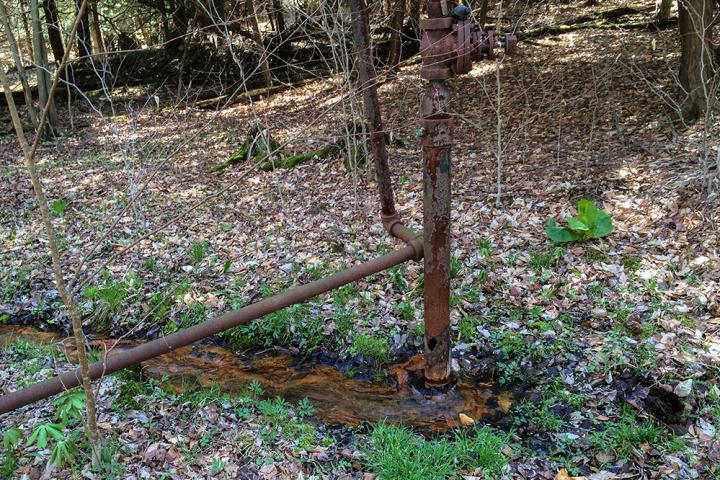
Credit: Pa Department of Environmental Protection
Leaking natural gas wells are considered a potential source of methane emissions, and a new nanomaterial cement mixture could provide an effective, affordable solution for sealing these wells, according to a team of Penn State scientists.
“We have invented a very flexible cement that is more resistant to cracking,” said Arash Dahi Taleghani, associate professor of petroleum engineering at Penn State. “That’s important because there are millions of orphaned and abandoned wells around the world, and cracks in the casings can allow methane to escape into the environment.”
When natural gas wells are drilled, cement is used to secure the pipe, or casing, to the surrounding rock, creating a seal that prevents methane from migrating into the shallow subsurface, where it could enter waterways, or the atmosphere, where it is a potent greenhouse gas, the scientists said.
Wells can extend miles underground and over time changing temperatures and pressures can degrade the cement, causing cracks to form. The scientists said repairs involve injecting cement in very narrow areas between the casing and rock, requiring special cement.
“In construction, you may just mix cement and pour it, but to seal these wells you are cementing an area that has the thickness of less than a millimeter, or that of a piece of tape,” Dahi Taleghani said. “Being able to better pump cement through these very narrow spaces that methane molecules can escape from is the beauty of this work.”
Adding almost 2D graphite created a cement mixture that better filled these narrow spaces and that was also stronger and more resilient, the scientists found. They recently reported their findings in the International Journal of Greenhouse Gas Control. Maryam Tabatabaei, a postdoctoral scholar in the John and Willie Leone Family Department of Energy and Mineral Engineering, also contributed to this research.
The scientists developed a multi-step process to uniformly distribute sheets of the nanomaterial into a cement slurry. By treating the graphite first with chemicals, the scientists were able to change its surface properties so the material would dissolve in water instead of repelling it.
“If we just pour this material in the water and mix it, these small particles have a tendency to stick together and form a conglomerate,” Dahi Taleghani said. “If they are not dispersing evenly then the graphite is not as strong inside the cement.”
The cement mixture can be used in active unconventional wells like those found in the Marcellus Shale gas play, or to seal orphaned and abandoned gas wells, the scientists said. It also shows promise for use in carbon dioxide capture and storage technology.
Graphite is more affordable than other nanomaterials previously used to bolster cement performance. In addition, very little of the material is needed to strengthen the cement, the scientists said.
“Considering the low cost of the amount of graphite nanoplatelets required for this test, this technology may provide an economic solution for industry to address possible cementing problems in the field,” Dahi Taleghani said.
###
Media Contact
A’ndrea Elyse Messer
[email protected]
Related Journal Article
http://dx.




